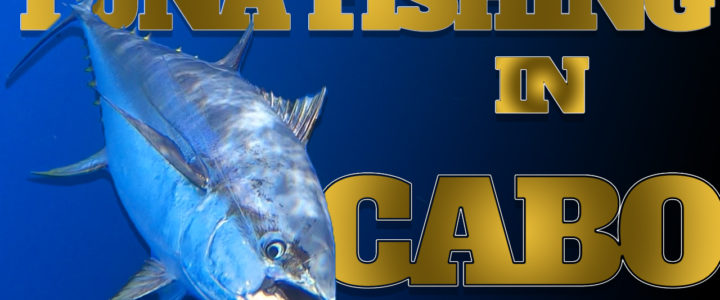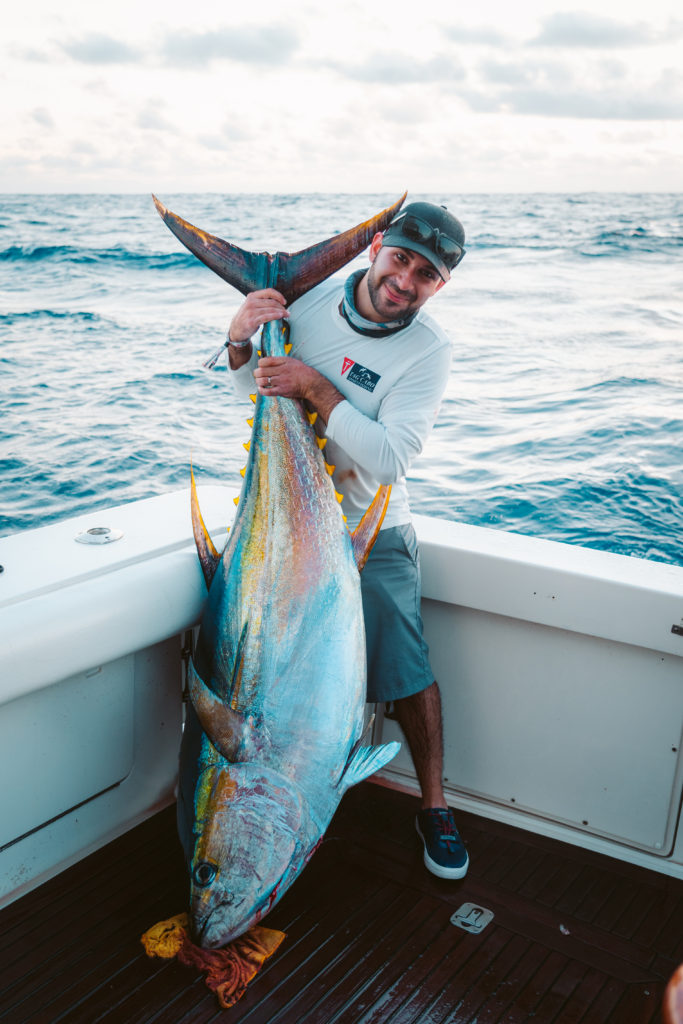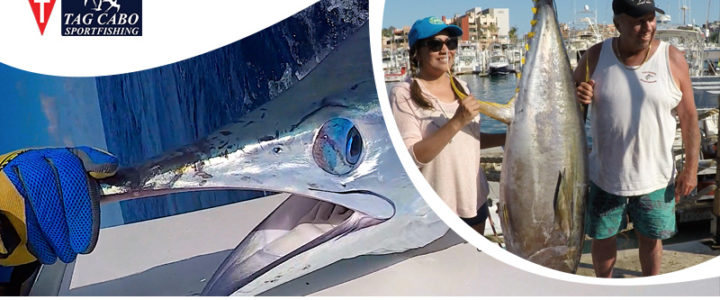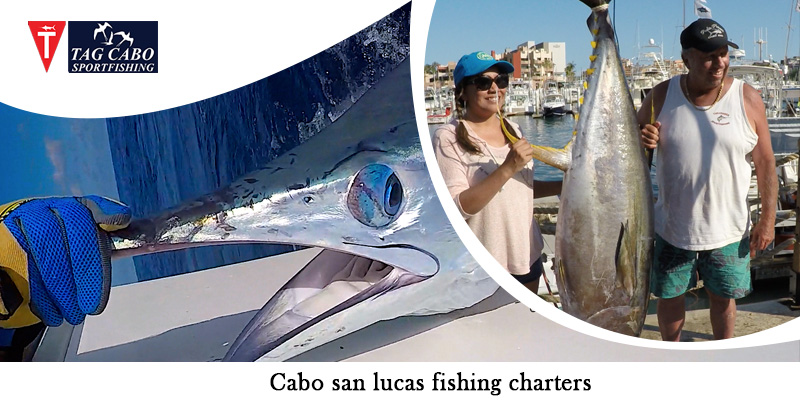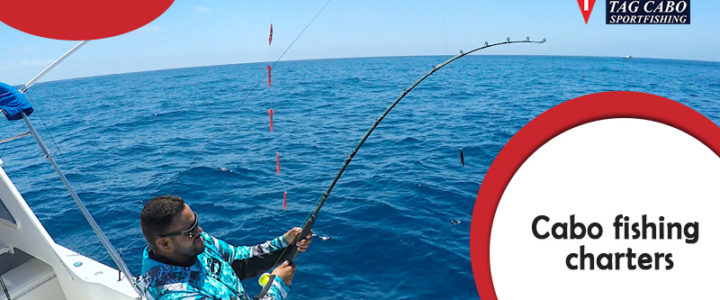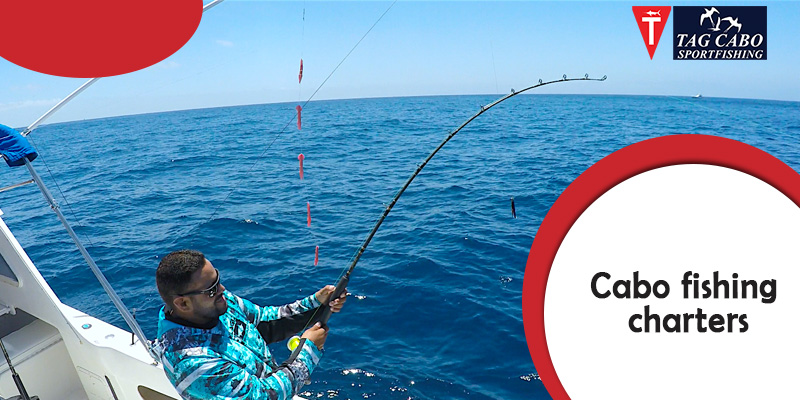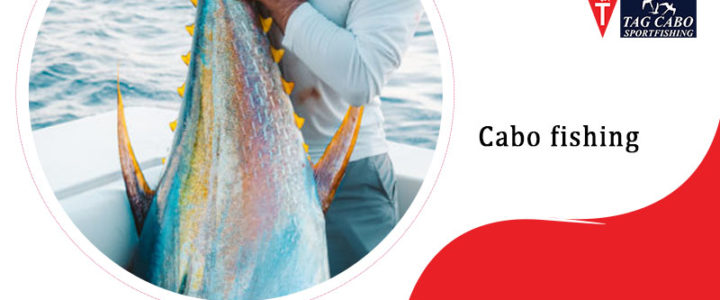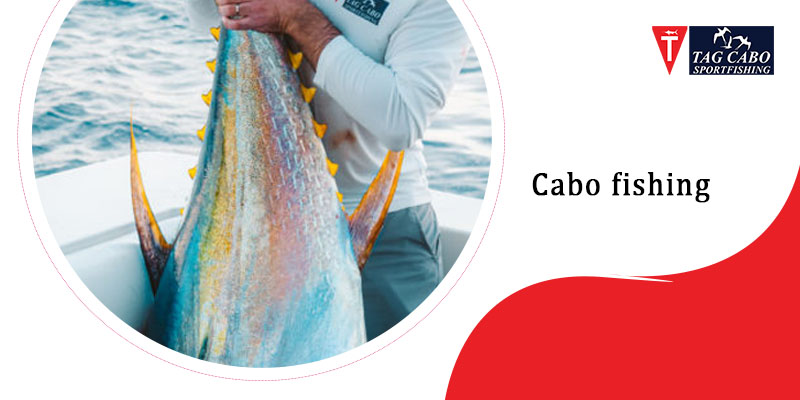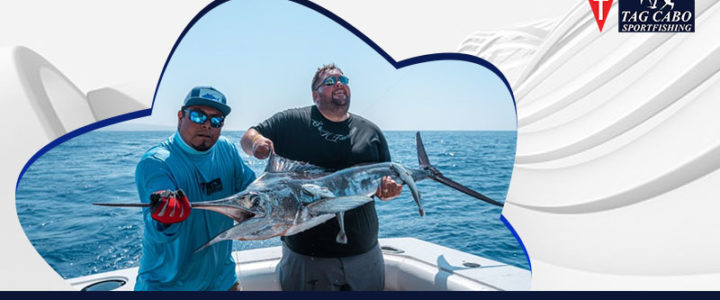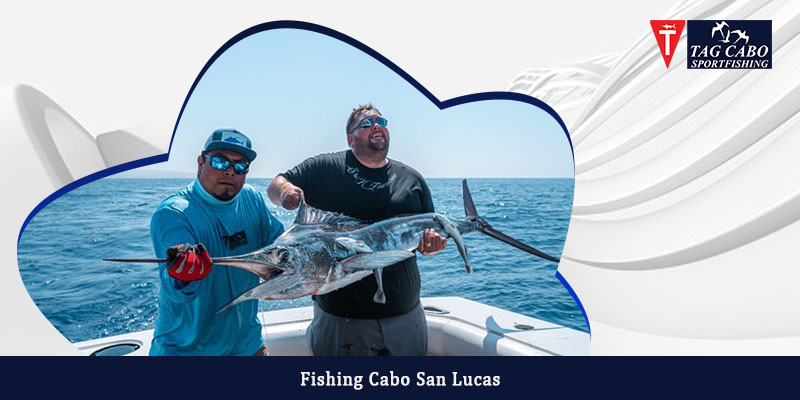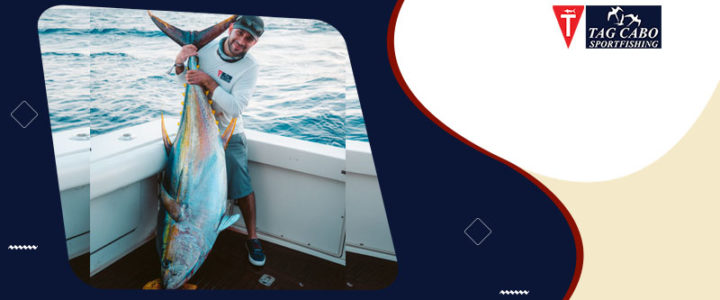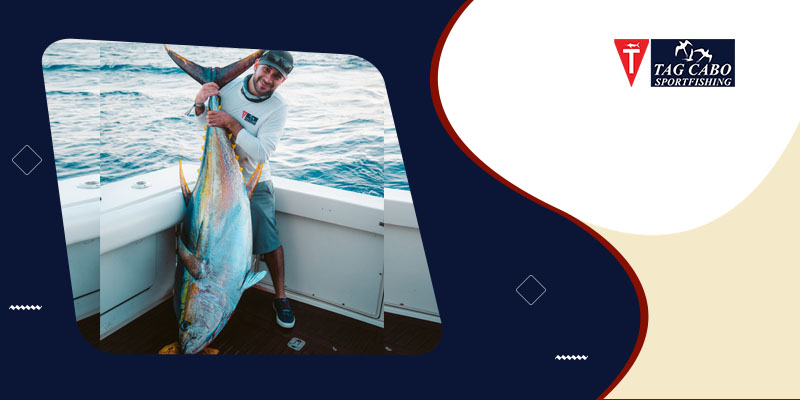The best seasons for Tuna Fishing in Los Cabos
Yellowfin Tuna Description
Yellowfin Tuna (“Ahi” in Hawaiian) are a beautiful and tasty fish found throughout the world in warm waters. They are probably the most commonly caught offshore gamefish. They often group together in enormous schools and can be seen breaking the surface chasing after bait. They often follow dolphins around and can be caught under schools of those.
Tuna eat a large number of different things including baitfish like sardines and mackerel, squid, and even small pelagic crabs. They can become difficult to catch when they are keyed in on tiny baits. If you see tuna feeding on the surface and can’t get them to bite, that could be the reason.
Knowledgeable captains have countless yellowfin tuna fishing spots in Cabo San Lucas, and since the fish migrate through our local banks all summer, you might find them anywhere on a given day. But the fish return to certain places like clockwork each year. These include the San Jaime bank.
Yellowfin Tuna swim great distances during their lifetimes. They attain sizes in excess of 400lbs, although fish this size are only found in the Eastern Pacific and are generally caught in Mexico. Many nice fish in excess of 200lbs are also caught in Panama.
Like all tuna they pull hard for their size. They almost never jump when hooked, although I have seen them come out of the water to grab a bait or lure. When you get them near the boat they turn sideways and swim in large circles making it a long process to get them in the boat. It’s virtually impossible to horse the larger ones in quickly no matter what tackle you are using. They are a great gamefish and are great to eat.
Finding the fish usually isn’t hard – but catching them can be a different matter entirely. Yellowfin tunas spend the vast majority of their time far below the surface. If you’re lucky enough to intercept them on the rare occasion when they rise to feed on the surface, you are way ahead of the game. But what about the other 90 percent of the time, when you know the fish are there but they stay deep? How can you elicit a strike in those circumstances?
Whether you are fishing with lures or bait, chum is often effective on tuna of all sorts, and Yellowfin are no exception. You can either chum with live bait or chunks of cut bait. That helps keep the fish around the boat. For trolling, you can try tuna feathers, cedar plugs, and plastic skirted trolling lures.
According to research, yellowfins show an affinity for waters in the 72-82 degree Fahrenheit range, with larger fish preferring slightly cooler waters. By studying SST (sea surface temperature) charts you can hone down your search area significantly when looking for fish, and you’ll find the best fishing in areas of optimal water temperature.
Like terrafin app or satfish webpage are two great options that will help you look SST charts for about $100 usd per year.
Speaking of charts, any marine angler worth his salt knows the importance of structure. Reefs, shoals, ledges, humps, seamounts all attract bait, which in turn attract larger predators. When all else fails you can usually find a few fish around structure, regardless of how deep it is. Add any or all of the above and the action just gets hotter.
Put a variety of different baits in your spread. Tuna can be very finicky and it’s tough to “match the trolling for tuna with squidsatch” if you don’t know what they’re feeding on. Run a variety of baits – squid bars, spreader bars, daisy chains and single baits – and if you notice certain ones getting most of the action, switch out your other baits for more of the same.
While all this may seem frivolous on a public level, the sneak attack from above seems to work the best and when it comes to yellowfin tuna fishing nothing…and i do mean NOTHING…will pull the wool over their penetrating eyes more so than the deployment of a kite or helium balloon with a robbery flying fish.
Conclusions
Tons of tuna swim through the Pacific waters in Baja California, within the schools of fish and surface layers. The privileged weather that Los Cabos has influences fish behavior, making it a reference spot for sports fishing.
Although the billfish is the most known species in the area, the tuna fishing activities make the most out of the climate, depth distribution and water conditions.
Rent one of our charter boats to complete your tuna fishing trip. Tag Cabo sportfishing will provide you with everything you need to have the time of your life in Los Cabos. Our crew will make your fishing dreams come true.

